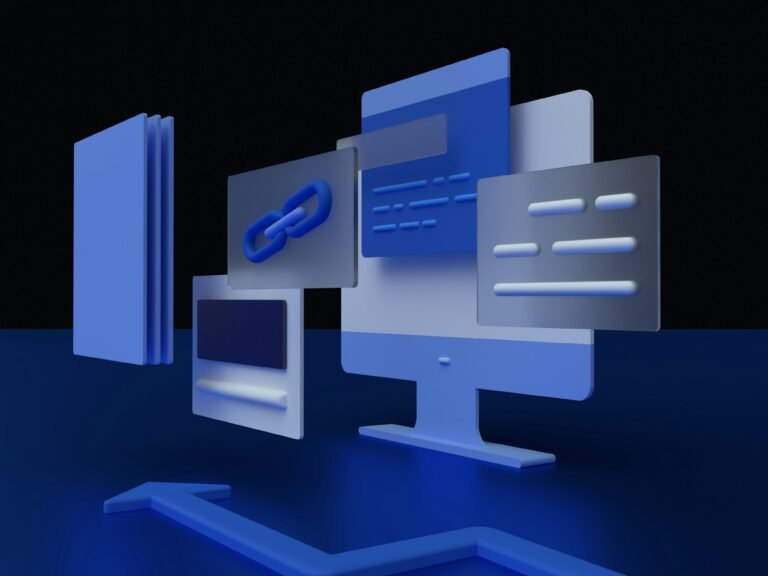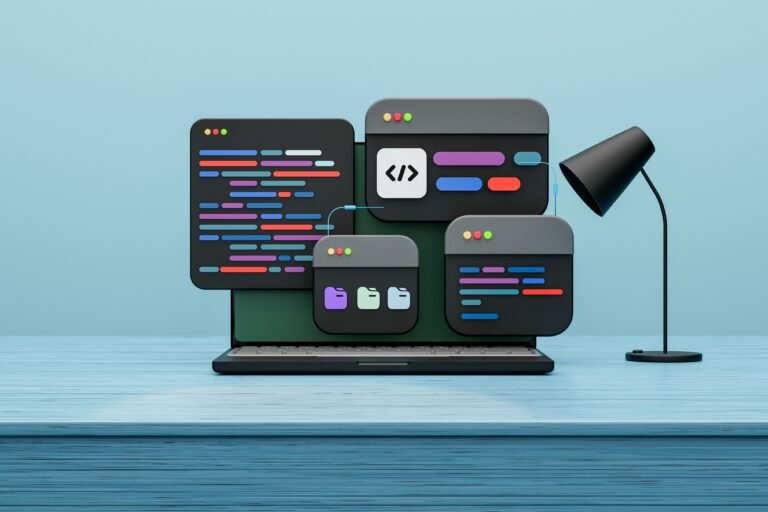Your Gateway to Mastering Secure Software Development
In today’s digital landscape, building secure software isn’t just an option; it’s a necessity. The Learning Center provides a one-stop destination for developers, engineers, and security professionals committed to integrating security from the very start of the development process. Here, you’ll find an in-depth exploration of secure development best practices, checklists, and guiding principles to help you build resilient, secure software that withstands today’s sophisticated threats.

Secure Software Development Lifecycle (Secure SDLC)
The Secure SDLC section provides a structured approach to embedding security throughout each phase of the development process, from initial planning through deployment and maintenance. Here, you’ll find resources that guide you in:
- Defining Security Requirements: Learn how to assess and define clear security requirements early in the process to set a strong foundation.
- Threat Modeling: Understand and identify potential security threats and vulnerabilities before they become critical issues.
- Security Testing: Explore methods for integrating security testing within various stages of development to catch vulnerabilities early.
- Deployment & Maintenance: Gain insights into secure deployment practices and ongoing maintenance strategies to keep your software secure post-launch.
Each phase in the Secure SDLC is explained with actionable steps, empowering you to build software with security built into the DNA of your project.
Secure SDLC Methodologies
With evolving cyber threats, adopting a Secure SDLC methodology ensures that security is not an afterthought but an inherent part of the process. Below, we explore some of the most popular Secure SDLC methodologies and their key features.
1. Microsoft Security Development Lifecycle (SDL)
The Microsoft SDL is a highly structured framework aimed at reducing security risks throughout the development process.
Key Features:
- Threat modeling to identify and mitigate potential vulnerabilities.
- Security training for development teams.
- Secure coding practices integrated into development workflows.
- Automated tools for static analysis and vulnerability detection.
Best For: Organizations prioritizing a prescriptive, well-documented approach to secure development.
2. OWASP Software Assurance Maturity Model (SAMM)
OWASP SAMM provides a flexible framework for evaluating and improving secure development processes.
Key Features:
- Maturity model tailored to an organization’s size and risk profile.
- Guidelines across four business functions: Governance, Design, Implementation, and Verification.
- Risk-based approach to prioritize security activities.
- Continuous improvement roadmap for secure SDLC practices.
Best For: Teams looking for a customizable framework that evolves with their needs.
3. NIST Secure SDLC Framework
The National Institute of Standards and Technology (NIST) emphasizes integrating security into each SDLC phase to address compliance and risk management.
Key Features:
- Risk assessments and mitigation strategies.
- Security requirements embedded in design and development phases.
- Emphasis on testing, validation, and secure deployment.
- Compliance with government and industry standards.
Best For: Organizations requiring strict adherence to regulatory and compliance standards.
4. Agile Secure SDLC
Combining Agile principles with secure development practices, this methodology ensures security keeps pace with rapid iterations.
Key Features:
- Incremental threat assessments and vulnerability checks at each sprint.
- Continuous feedback loop to adapt security practices dynamically.
- Security user stories and acceptance criteria in backlog management.
- Automated security testing integrated into CI/CD pipelines.
Best For: Agile teams focused on maintaining speed while addressing security in every iteration.
5. DevSecOps
DevSecOps extends DevOps principles by embedding security directly into development and operations workflows.
Key Features:
- “Shift-left” approach to integrate security testing early in the lifecycle.
- Continuous monitoring and automated security checks in CI/CD pipelines.
- Collaboration between development, operations, and security teams.
- Use of tools for static/dynamic application security testing (SAST/DAST).
Best For: Teams embracing automation and collaboration to embed security into fast-paced DevOps workflows.
6. Waterfall Secure SDLC
For organizations using traditional Waterfall methodologies, security can be integrated into the sequential phases of development.
Key Features:
- Clear security requirements defined during the planning phase.
- Rigorous security reviews at the end of each phase.
- Thorough testing for vulnerabilities before deployment.
- Emphasis on documentation for traceability and audits.
Best For: Teams working on projects with strict timelines and minimal scope for iterative changes.
Choosing the Right Secure SDLC Methodology
Selecting the best Secure SDLC methodology depends on your organization’s:
- Development Approach: Agile, Waterfall, or DevOps.
- Industry Regulations: Compliance with standards like GDPR, HIPAA, or PCI DSS.
- Risk Profile: The sensitivity of data and application exposure to threats.
- Team Maturity: Experience and familiarity with secure development practices.
By adopting a Secure SDLC methodology tailored to your needs, you can deliver applications that are not only functional but also secure and resilient against evolving cyber threats.
Explore these methodologies and start building security into every phase of your development lifecycle!
Secure SDLC Checklists
To make secure development easy and consistent, the Learning Center offers comprehensive security checklists tailored to each SDLC phase:
- Planning & Requirements: Define security goals, user access requirements, and compliance considerations.
- Design: Consider security aspects like data flow and architecture, and identify areas prone to attacks.
- Development: Implement secure coding standards and follow guidelines for handling data, authentication, and error handling.
- Testing: Conduct security testing for vulnerabilities like SQL injection, cross-site scripting (XSS), and more.
- Deployment & Operations: Ensure secure configurations, manage access control, and establish monitoring protocols.
These checklists are designed to be practical and easy to follow, enabling teams to consistently apply security controls as they progress through development.
Secure Programming Principles
Writing secure code is the bedrock of application security. This section provides an in-depth look into secure programming principles that help you write code resistant to common vulnerabilities:
Each principle is explained with best practices and practical examples, providing you with a clear path to secure coding.
Secure Software Principles |
||
|---|---|---|
| 1 | Define security requirements | The software stakeholders should Identify and document security requirements early in the development life cycle and make sure that subsequent development artifacts are evaluated for compliance with those requirements. When security requirements are not defined, the security of the resulting system cannot be effectively evaluated. |
| 2 | Model threats | Use threat modeling to anticipate the threats to which the software will be subjected. Threat modeling involves identifying key assets, decomposing the application, identifying and categorizing the threats to each asset or component, rating the threats based on a risk ranking, and then developing threat mitigation strategies that are implemented in designs, code, and test cases |
| 3 | Practice defense-in- depth | Manage application risk with multiple defensive strategies, so that if one layer of defense turns out to be inadequate, another layer of defense can prevent a security flaw from becoming an exploitable vulnerability and/or limit the consequences of a successful exploit. For example, combining secure programming techniques with secure runtime environments should reduce the likelihood that vulnerabilities remaining in the code at deployment time can be exploited in the operational environment |
| 4 | Adhere to the principle of least privilege | Every process should be executed with the least set of privileges necessary to complete the job. Any elevated permission should only be accessed for the least amount of time required to complete the privileged task. This approach reduces the opportunities an attacker must execute arbitrary code with elevated privileges |
| 5 | Deny-By-Default | User access decisions should be based on permissions rather than exclusion. This means that, by default, access is denied, and the protection scheme identifies conditions under which access is permitted. The system should set minimal or no permissions for new users/roles and users/roles should not receive access to new features until it is explicitly granted. |
| 6 | Validate input | Validate input from all trusted/untrusted data sources. Proper input validation can eliminate the vast majority of software vulnerabilities. Be suspicious of most external data sources, including command line arguments, network interfaces, environmental variables, and user-controlled files. |
| 7 | Sanitize data sent to other systems | Ensure that all information sent to complex subsystems/external systems, including command shells, relational databases, and commercial off-the-shelf (COTS) components, is sanitized. Attackers might be able to employ SQL, command, or other injection techniques to access unused functionality in these components. Since the complex subsystem being called does not comprehend the context of the call, this is not necessarily an issue with input validation. The calling process is in charge of sanitizing the data prior to launching the subsystem because it is aware of the context. |
| 8 | Use effective quality assurance techniques | Vulnerabilities can sometimes be found and fixed using good quality assurance procedures. An efficient quality assurance program should include fuzz testing, penetration testing, and source code audits. Systems that have undergone independent security examinations may be more secure. External reviewers offer a distinct viewpoint, for instance, in spotting and correcting false assumptions. |
| 9 | Adopt a secure coding standard | Establish and enforce a secure coding standards for your target development language and platform. This principle will eliminate most of the security issues with code. |
| 10 | Fail Securely | Implement controls and procedures that address security breaches in a safe and impact-free manner at the design and development stages. |
Suggested Exercises: Secure SDLC Tests






